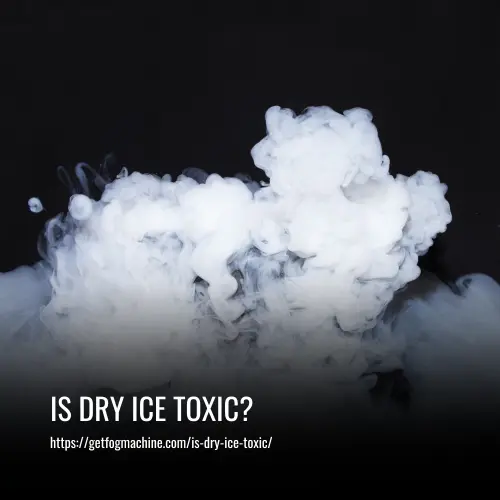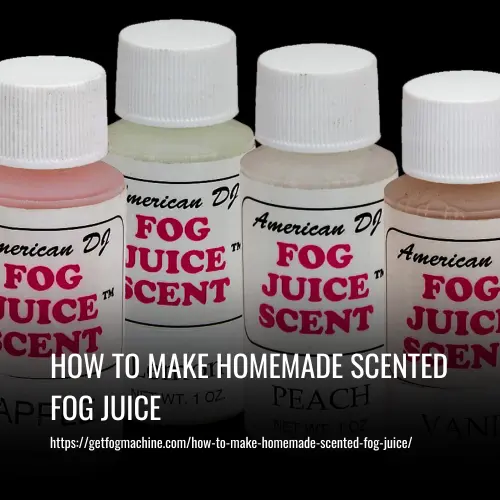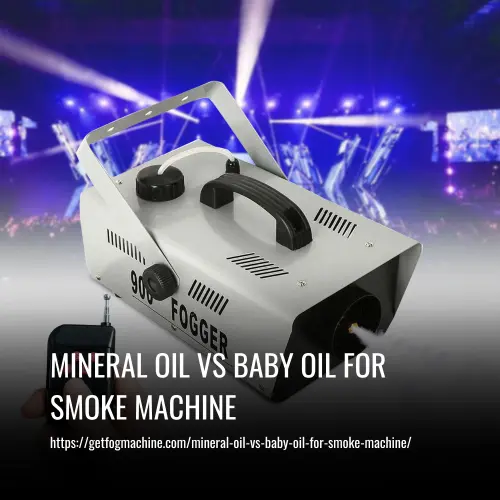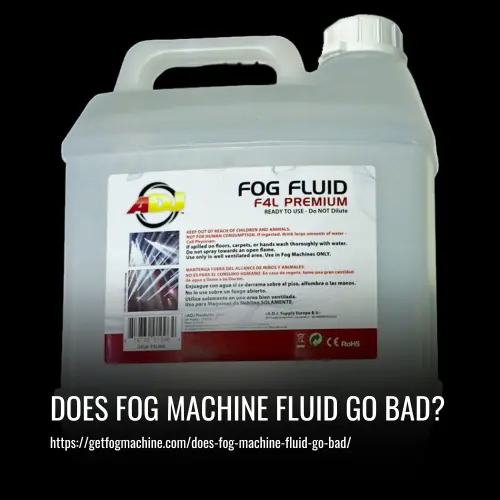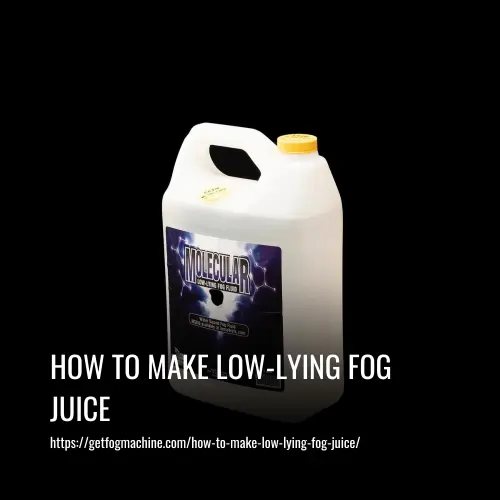Can You Use Haze Fluid In Fog Machine? Explained
This post contains affiliate links. As an Amazon Associate, we earn from qualifying purchases.
No, you cannot use haze fluid in a fog machine. Fog machines and haze machines are designed to work with different types of fluids. Using the wrong type of fluid can damage the machine, void the warranty, and even pose health risks. Fog machines require fog fluid, which creates a thick, dense fog effect.
Haze machines, on the other hand, use haze fluid to create a lighter, more dispersed haze-like effect that enhances light beams and visibility. It is crucial to use the correct type of fluid for each machine to ensure optimal performance and safety.
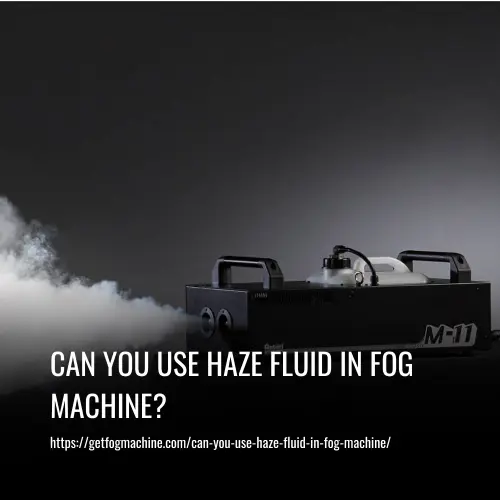
What Is The Difference Between Haze And Fog
The difference between haze and fog lies in their appearance and duration. Fog is thick and opaque, creating an obscuring effect that typically lasts for a short period of time. On the other hand, haze is thin and transparent, providing a longer-lasting and more subtle ambiance.
While fog is used primarily for creating specific effects, such as in movies or stage productions, haze is commonly used to enhance lighting and add atmosphere to a space. Both haze and fog can be achieved using machines that emit specialized fluids, with fog machines using water-based or oil-based fluids and haze machines typically using water-based formulas.
How Is Fog Created
Fog machines produce fog by vaporizing fog fluid, converting it from a liquid to an aerosol form. Fog is essentially made up of liquid droplets suspended in the air. This process is achieved by forcing the fluid through a heated pipe under high pressure. As the heated fluid is released, it rapidly cools and condenses into visible fog particles.
The type of fluid used in the machine can vary, with options including water-based or oil-based formulations. The choice of fluid can impact factors such as the density and duration of the fog, as well as any associated odors.
Is Fog the Same as Smoke
No, fog and smoke are not the same. While both can create a fog-like effect, they differ in their composition and how they are produced. Fog consists of tiny liquid droplets suspended in the air, formed when warm and humid air cools down rapidly.
On the other hand, smoke is produced by the burning of materials and consists of solid particles. Fog machines, commonly used in performances, heat fog fluid to vaporize it, creating a misty atmosphere. This fog is different from the smoke produced by burning.
Fog can be used for various special effects, such as creating the illusion of walking on clouds or obscuring a battlefield. To ensure fast dissipation, fog fluid is often used, which evaporates quickly before ascending into the atmosphere.
What Exactly Is Haze and How Is it Used
Haze is a type of atmospheric effect created by liquid droplets that are small and evenly scattered over a large area, resulting in a misty appearance. Haze machines work by either heating the fluid or evaporating it using high air pressure. The main purpose of haze is to enhance the visibility of light beams by reflecting light off the droplets, allowing the beams to be seen as they travel through the air.
This effect is particularly useful in stage productions, concerts, and other entertainment events where the visibility of light effects is crucial. Additionally, haze can be used to create a hazy environment for artistic or atmospheric purposes.
What is Fog Fluid Made Of
Fog fluid is made up of various ingredients, with propylene glycol being a common component. This substance is water-soluble and has been extensively researched for its impact on health. There are regulations in place to ensure that the maximum amount of glycol that can be ingested without harm is not exceeded.
It is important to use the minimum amount of fog necessary to achieve the desired effect. In order to cool the fog, fog machines utilize cryogenic substances like carbon dioxide and nitrogen, which are released into the environment. It is crucial to be cautious and prevent harmful levels of these gases from accumulating in the air or causing oxygen deprivation.
What Is Haze Fluid Made Of
Haze fluid is made of water-soluble glycols or highly refined oils, depending on the specific application. Water-based fluids, such as glycols, are commonly used in haze machines to produce a haze-like effect. On the other hand, oil-based fluids are used in oil-based haze machines to create a denser and longer-lasting haze.
The choice of fluid depends on factors such as the desired effect, the type of machine being used, and the safety considerations for the specific environment. Experimenting with different formulations of fluid can help achieve optimal results in creating atmospheric effects like light beams and enhancing visual experiences in various industries such as gaming, theater, and concerts.
Are Haze And Fog Effects The Same
Haze and fog effects may seem similar, but they produce distinct visual experiences. A haze machine is designed to produce a thick layer of haze in the room, which creates a dramatic and vivid effect. To achieve this desired effect, a haze machine should be left on continuously to build up the haze.
On the other hand, fog machines create a unique effect that resembles the explosive release of steam from a smokestack. While fog can create a dense and dominant atmosphere when left on for extended periods, it requires more fluid and time to fill a space compared to haze, as it dissipates more rapidly.
Do Fog and Haze Machines Consume Fluids at the Same Rate
Fog and haze machines work differently, causing them to consume fluids at different rates. Fog machines use hot fluid to create dense clouds of fog, whereas haze machines use water-based or oil-based fluids to create a subtle, lingering haze-like effect.
Fog machines typically use more fluid compared to haze machines because they produce thicker clouds of fog. The fluid consumption rate of fog machines can vary depending on factors such as the type of machine, the concentration of the fluid, and the desired fog density.
On the other hand, haze machines use fluids at a slower rate because they create a lighter, more dispersed haze effect. The rate at which haze machines consume fluids can also be influenced by factors like the type of fluid used and the machine’s output settings.
Overall, fog and haze machines consume fluids at different rates due to the differences in their mechanisms and the desired effects they produce.
FAQs
Haze and fog fluids may seem similar because they both consist of liquid droplets. However, there are notable differences between the two. Haze fluid produces a finer and hazier effect compared to fog fluid. Haze creates a mist of very fine drops that are evenly distributed over a large area, making it ideal for emphasizing light beams. On the other hand, fog fluid produces a denser fog that is more perceptible to the naked eye.
It is not advisable to put just any liquid in a fog machine. The most common and recommended type of fog machine fluid is water-based. This type of fluid is typically made of distilled water and glycerin. The glycerin helps produce dense and long-lasting fog. Water-based fog fluids are generally safe to use in most fog machines, making them ideal for indoor venues.
While haze machines and fog machines share similarities, they are not the same. Haze machines create a finer and hazier effect compared to fog machines. The haze produced is less perceptible to the naked eye, but it is perfect for enhancing lighting effects. The individual droplets of haze can reflect light beams, creating a visually stunning atmosphere.
Although many brands of haze fluid are FDA approved, it is still important to exercise caution when using them. While it is recommended to use haze machines in well-ventilated areas with good air circulation, inhaling the haze can still pose potential health risks. It is crucial to prioritize safety and follow the provided warnings and usage regulations.
Haze fluids can be either oil-based or water-based. Oil-based haze fluids typically use a mineral oil base, while water-based fluids use either a propylene glycol or glycerol base. It is important to note that the different formulations of fluid are not compatible or interchangeable. Each type of fluid has its own unique properties and should be used accordingly.
Haze and smoke serve similar purposes and are created in a similar manner. However, there are notable differences between them. Haze is more subtle and is used to create a slightly hazy atmosphere. This allows lights and lasers to generate beams that cross the room. Unlike conventional smoke, haze is not as thick, and its intensity can be adjusted using a lighting console.
The lifespan of haze fluid depends on various factors. Unopened fog machine fluid can last for up to three years, while opened and properly resealed fluid can last for about two months. It is important to stock up accordingly to ensure a continuous supply of haze effects for your events or gatherings.
Conclusion
While there may be some debate over whether you can use haze fluid in a fog machine, it’s important to remember that safety should always be your top priority. Make sure to carefully read the instructions and specifications of your fog machine before using any type of fluid.
It’s always better to be safe than sorry when it comes to operating any type of machinery. So, do your research, follow the guidelines, and enjoy creating the perfect atmosphere for your next event!

